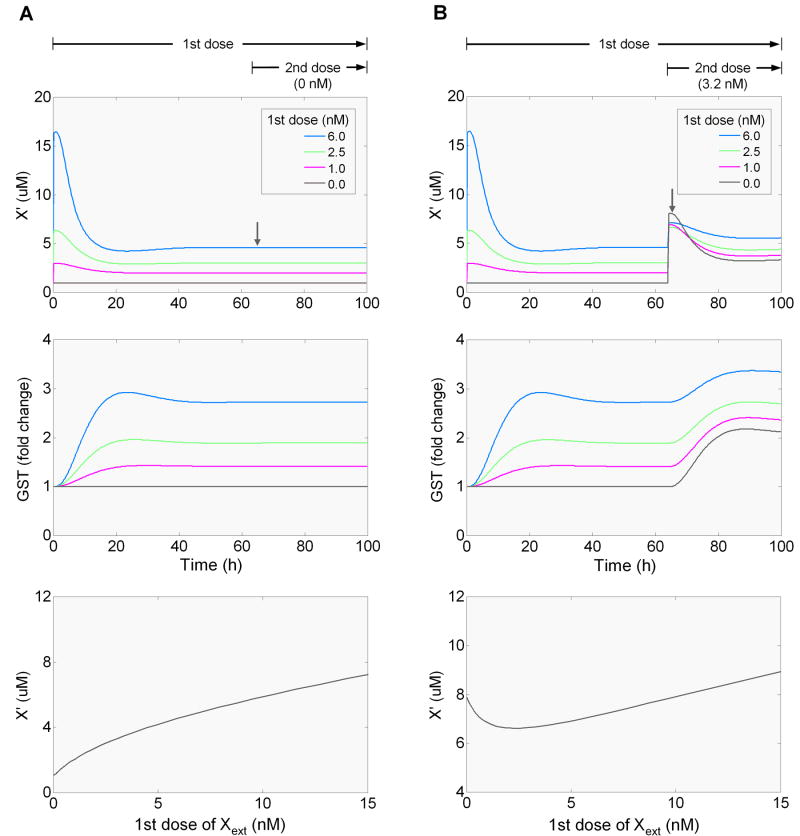Figure 8.
Simulations demonstrating that homeostatic control mediated by negative feedback alone cannot generate steady-state hormesis (A), but may generate conditioning hormesis involving two sequential dosing events (B). The dose response curves for X′ vs Xext were obtained at 66 h, 2 h after the onset of the second dose (downward arrow). The results were obtained from simulations with the phase II negative feedback enabled, and the phase I negative feedback and phase I to II feedforward disabled. Disabling phase I negative feedback and phase I to II feedforward was implemented by setting CYP at a fixed concentration at 1.5 μM, and setting the initial concentrations of DRE(Nrf2), DRE(GST), DRE(MRP), and DRE(CYP) all to zero.

